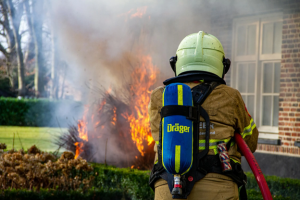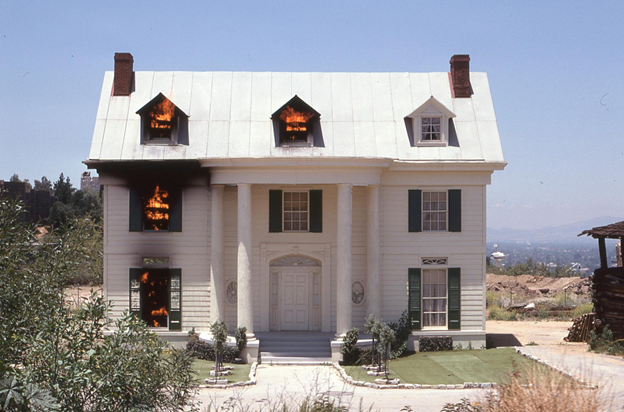House fires can be devastating, but much of what people believe about them is based on myths and misconceptions. These myths can give homeowners a false sense of security or cause them to overlook potential hazards. To keep your home safe, it’s essential to separate fact from fiction when it comes to fire safety. Here are seven common myths about house fires that might surprise you.
1. Myth: Leaving a Fan on Overnight Can’t Start a Fire
Many people believe that it’s completely safe to leave a fan running all night, but this isn’t entirely true. While most fans are designed for continuous use, older or faulty fans can overheat and become a fire hazard. The possibility of a fan causing a house fire increases if the fan has damaged wiring, a dust buildup, or a defective motor. In fact, any electrical device has the potential to start a fire if not properly maintained. To reduce the risk, make sure your fans are in good condition, clean them regularly, and avoid leaving them unattended for long periods.
2. Myth: Modern Homes Are Safer From Fires Than Older Ones
While newer homes often have advanced fire safety features such as smoke alarms and fire-resistant building materials, they are not immune to fires. In fact, modern homes can sometimes pose a greater risk due to the prevalence of synthetic materials in furniture and home decor, which burn faster and produce more toxic smoke than natural materials. Additionally, open floor plans, which are common in newer homes, allow fires to spread more quickly. Homeowners should still practice caution and ensure that their fire prevention systems are up-to-date.
3. Myth: You Have Plenty of Time to Escape During a House Fire
One of the most dangerous misconceptions about house fires is that you’ll have enough time to gather your belongings and escape. The truth is that fires can spread incredibly quickly. In some cases, you may have as little as two minutes to evacuate safely before smoke and flames make escape impossible. Smoke inhalation is one of the leading causes of death in house fires, and it can incapacitate a person within minutes. This is why having a well-practiced fire escape plan is crucial for every household.
4. Myth: Fire Won’t Spread From One Room to Another
Many homeowners believe that if a fire starts in one room, it won’t easily spread to others. In reality, fire can move from one room to another in a matter of seconds, especially if the doors are open. Heat, smoke, and flames can travel rapidly, fueled by flammable materials and drafts that carry the fire to different areas of the home. Closing doors at night or during an emergency can help slow the spread of fire and give you more time to escape.
5. Myth: Small Fires Can Always Be Put Out With a Fire Extinguisher
While fire extinguishers are an essential tool for fire safety, they aren’t always a foolproof solution. Many people underestimate the speed at which a fire can grow, and by the time they try to use a fire extinguisher, the flames may already be out of control. It’s important to know when to attempt to use an extinguisher and when to evacuate. If a fire is larger than a small trash can, or if it’s spreading rapidly, it’s safer to leave the home and call the fire department rather than risk injury trying to put it out.
6. Myth: Smoke Alarms Are All You Need for Fire Safety
Smoke alarms are an important component of fire safety, but they are just one piece of the puzzle. Relying solely on smoke alarms can give homeowners a false sense of security. For comprehensive fire protection, it’s important to have a multi-layered approach. This includes installing carbon monoxide detectors, maintaining fire extinguishers, and creating an evacuation plan. Additionally, regularly testing and maintaining smoke alarms is crucial—many people forget to check their alarms or change the batteries, rendering them ineffective during an actual fire.
7. Myth: Fires Only Happen in the Kitchen
While kitchen fires are one of the most common causes of house fires, they can start in any room. Electrical fires, for instance, often begin in living rooms, bedrooms, or basements due to overloaded outlets, faulty wiring, or malfunctioning appliances. Bedrooms are also at risk due to the use of space heaters, candles, and other heat sources. It’s essential to be vigilant throughout your entire home and avoid hazards like leaving appliances plugged in when not in use or neglecting to repair faulty wiring.

Understanding the facts about house fires is critical for protecting your home and loved ones. By debunking these common myths, you can take proactive steps to ensure your house is as safe as possible. From properly maintaining your electrical devices to having a reliable escape plan, being prepared is the best way to minimize the risk of a house fire.

